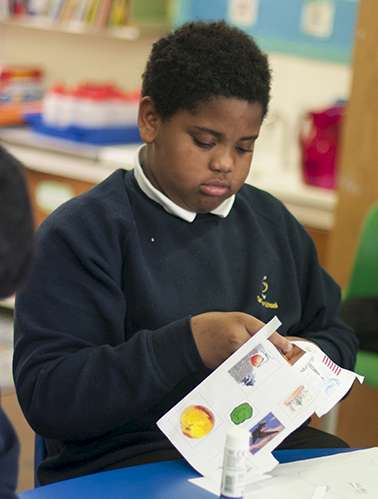Why the choice of language you use to communicate with a child with autism is so important

Steph Reed from www.autismspectrumteacher.com shares her top tips for communicating clearly with a child with autism and why it’s crucial to do so.
Each child with a diagnosis of autism will have varying abilities with language and communication. If you know more than one child with autism, you will know that their communication and language abilities and features will be very different.
It is important to understand the difference between expressive and receptive communication skills, because all children with autism will have some degree of challenge/ delay in one or both of these areas:
Expressive communication: using language and verbal or non-verbal communication to convey a message.
Receptive language: understanding words, language and communication as a receiver of a communicative message.
Furthermore, research suggests that children with autism have challenges related to:
Joint attention: the ability to co-ordinate attention between people and objects
Symbol use: learning and understanding conventional or shared meanings for symbols (a symbol being anything that conveys a meaning, for example; a sound, a gesture or a word).
It is important to actively be aware and think about these four areas when communicating with a child with autism. Questions you could ask yourself when communicating/ teaching are:
- Does the child mean something different to what they have said? (expressive language)
- Has the child understood the question I have asked? (receptive language)
- Is the child not listening because they have difficulties with joint attention? (joint attention)
- Does the child understand a word or a picture I am using? (symbol use)
Taking these areas into consideration, your use of language is very important: Be clear in your use of language
Tips for communicating with a child with autism
- Be specific and to-the-point. If you want a child to sit on their chair, say “(name) sit”. Avoid using any unnecessary language that may get lost in the communication message such as “(name) can you please sit on your chair now”. Just use key words to avoid overload of information.
- Be literal and obvious in your choice of language.
- Say exactly what you mean: For example: rather than “don’t run” – say “walk”. In this example, the child may just process the word “run” and the communication message becomes meaningless. Always say what you mean.
- Be as concrete as possible in your use of language: Ensure any abstract language and concepts are supported visually to help with understanding.
- Avoid using any language that has a different meaning, such as sarcasm and idioms:This may be interpreted very literally or not understood at all. If you are teaching these concepts, ensure the meaning is fully explained in a way the child can understand.
- Emphasise key words of your communication message with sign language and/or visual support: Especially for children with additional learning difficulties, this can give the child extra cues to what you mean. The region you live in, will determine the common signs used in that area and a Speech and Language Therapist (SaLT/SLP) should be able to teach you or point you in the right direction of which signs are used in your location. If you do not have access to a SaLT/SLP, there is a lot of information online. Makaton is a simplified version of sign language specifically developed for people with learning difficulties and has been adapted for over 40 countries.
For more blogs, tips and insight on supporting children with autism, visit www.autismspectrumteacher.com or follow @asdteacherUK on social media
Remember the Zippy’s Friends Inclusion Supplement contains activities, visual support and social stories to help children with autism and other needs access Zippy’s Friends.